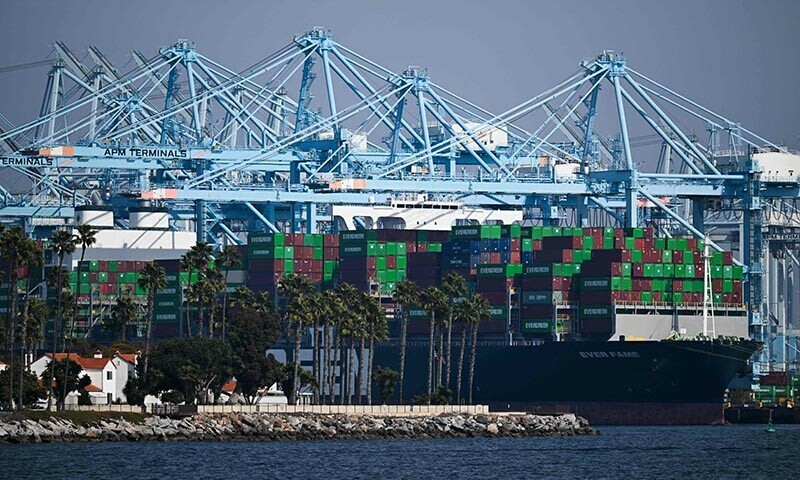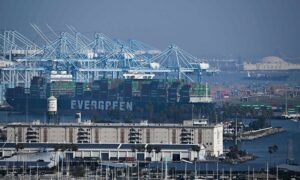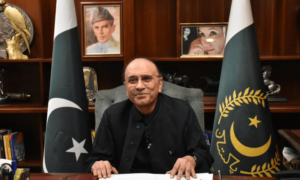China on Tuesday slapped tariffs on US imports in a rapid response to new US duties on Chinese goods, renewing a trade war between the world’s top two economies as President Donald Trump sought to punish China for not halting the flow of illicit drugs.
Trump’s additional 10 per cent tariff across all Chinese imports into the US came into effect at 12:01am ET on Tuesday (0501 GMT).
Within minutes, China’s Finance Ministry said it would impose levies of 15pc for US coal and LNG and 10pc for crude oil, farm equipment and some autos.
The new tariffs on US exports will start on February 10, the ministry said.
Separately, China’s Commerce Ministry and its Customs Administration said the country is imposing export controls on tungsten, tellurium, ruthenium, molybdenum and ruthenium-related items to “safeguard national security interests”.
Trump on Monday suspended his threat of 25pc tariffs on Mexico and Canada at the last minute, agreeing to a 30-day pause in return for concessions on border and crime enforcement with the two neighbouring countries.
But there was no such reprieve for China, and a White House spokesperson said Trump would not be speaking with Chinese President Xi Jinping until later in the week.
“The trade war is in the early stages so the likelihood of further tariffs is high,” Oxford Economics said in a note as it downgraded its China economic growth forecast.
US tariffs on Chinese imports take effect after Trump reprieves Canada and Mexico
Trump on Monday suspended his threat of 25pc tariffs on Mexico and Canada at the last minute, agreeing to a 30-day pause in return for concessions on border and crime enforcement with the two neighbouring countries.
But there was no such reprieve for China, with new levies coming into effect at 12:01 am ET on Tuesday (0501 GMT).
A White House spokesperson said Trump would not be speaking with Chinese President Xi Jinping until later in the week.
During his first term in 2018, Trump initiated a brutal two-year trade war with China over its massive US trade surplus, with tit-for-tat tariffs on hundreds of billions of dollars worth of goods upending global supply chains and damaging the world economy.
To end that trade war, China agreed in 2020 to spend an extra $200 billion a year on US goods but the plan was derailed by the COVID pandemic and its annual trade deficit had widened to $361 billion, according to Chinese customs data released last month.
“The trade war is in the early stages so the likelihood of further tariffs is high,” Oxford Economics said in a note as it downgraded its China economic growth forecast.
Trump warned he might increase tariffs on China further unless Beijing stemmed the flow of fentanyl, a deadly opioid, into the United States.
“China hopefully is going to stop sending us fentanyl, and if they’re not, the tariffs are going to go substantially higher,” he said on Monday.
China has called fentanyl America’s problem and said it would challenge the tariffs at the World Trade Organisation and take other countermeasures, but also left the door open for talks.
Neighbourly deals
There was relief in Ottawa and Mexico City, as well as global financial markets, after the deals to avert the hefty tariffs on Canada and Mexico.
Both Canadian Prime Minister Justin Trudeau and Mexican President Claudia Sheinbaum said they had agreed to bolster border enforcement efforts in response to Trump’s demand to crack down on immigration and drug smuggling. That would pause 25pc tariffs due to take effect on Tuesday for 30 days.
Canada agreed to deploy new technology and personnel along its border with the United States and launch cooperative efforts to fight organised crime, fentanyl smuggling and money laundering.
Mexico agreed to reinforce its northern border with 10,000 National Guard members to stem the flow of illegal migration and drugs.
The United States also made a commitment to prevent trafficking of high-powered weapons to Mexico, Sheinbaum said.
“As President, it is my responsibility to ensure the safety of ALL Americans, and I am doing just that. I am very pleased with this initial outcome,” Trump said on social media.
After speaking by phone with both leaders, Trump said he would try to negotiate economic agreements over the coming month with the two largest US trading partners, whose economies have become tightly intertwined with the United States since a landmark free-trade deal was struck in the 1990s.
The latest twist in the saga sent the Canadian dollar soaring after slumping to its lowest in more than two decades. The news also gave US stock index futures a lift after a day of losses on Wall Street, and sent oil prices lower.
Industry groups, fearful of disrupted supply chains, welcomed the pause.
“That’s very encouraging news,” said Chris Davison, who heads a trade group of Canadian canola producers. “We have a highly integrated industry that benefits both countries.” Trump suggested on Sunday the 27-nation European Union would be his next target, but did not say when.
EU leaders at an informal summit in Brussels on Monday said Europe would be prepared to fight back if the US imposes tariffs, but also called for reason and negotiation. The US is the EU’s largest trade and investment partner.
Trump hinted that Britain, which left the EU in 2020, might be spared tariffs.
Trump acknowledged over the weekend that his tariffs could cause some short-term pain for US consumers, but says they are needed to curb immigration and narcotics trafficking and spur domestic industries.
The tariffs as originally planned would cover almost half of all US imports and would require the United States to more than double its own manufacturing output to cover the gap — an unfeasible task in the near term, ING analysts wrote.
Other analysts said the tariffs could throw Canada and Mexico into recession and trigger “stagflation” — high inflation, stagnant growth and elevated unemployment — at home.
Trump to target UN Human Rights Council, UN Palestinian relief agency UNRWA
US President Donald Trump is expected on Tuesday to stop US engagement with the United Nations Human Rights Council and continue a halt to funding for the UN Palestinian relief agency UNRWA, a White House official said.
The move coincides with a visit to Washington by Israeli Prime Minister Benjamin Netanyahu, who has long been critical of UNRWA, accusing the agency of anti-Israel incitement and its staff of being “involved in terrorist activities against Israel.”
The United Nations and UNRWA did not immediately respond to requests for comment.
During Trump’s first term in office, from 2017-2021, he also cut off funding for UNRWA, questioning its value, saying that Palestinians needed to agree to renew peace talks with Israel, and calling for unspecified reforms.
The first Trump administration also quit the 47-member Human Rights Council halfway through a three-year term over what it called chronic bias against Israel and a lack of reform. The US is not currently a member of the Geneva-based body.
Under Democratic former President Joe Biden, the US was re-elected and served a 2022-2024 term.
A Human Rights Council working group is due to review the US human rights record in August, a process all countries undergo every few years. While the council has no legally binding power, its debates carry political weight and criticism can raise global pressure on governments to change course.
Since taking office for a second term on Jan 20, Trump has ordered that the US withdraw from the World Health Organisation and from the Paris climate agreement — also steps he took during his first term in office.
- Desk Reporthttps://foresightmags.com/author/admin/











